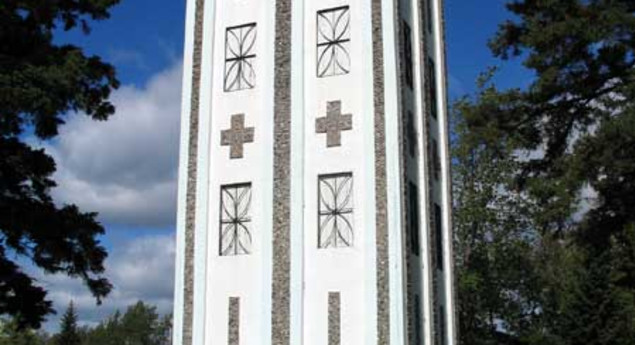Camp Morton was built in 1920 for Roman Catholic children as a summer outdoor religious camp in the Rural Municipality of Gimli. It was named after the Right Reverend Monsignor Thomas W. Morton, its founder and chief developer. One of the first buildings erected was a chapel, a focal point of camp life. The original building was very plain with an open ceiling. Later, its sides were extended and the interior finished with fir board. Stones from the beach were cemented together in an Italian design for the façade.
Pumps housed in the Water Tower drew water from Lake Winnipeg to a large tank in the tower, which supplied water for the camp and for watering the extensive flower gardens that once graced Camp Morton. The frame of the water tower is believed to have been built in the late 1920s. A stone facing was added in 1937, trimmed with nickel discs depicting King George VI and Queen Elizabeth I.
A row of buildings nearby were constructed in 1943 as cottages for visitors and staff, and known locally as The Arcade. Built from locally-cut logs, trimmed to two-foot lengths, were embedded in mortar. This type of construction has excellent insulation value and is still used today in the Interlake region. The second floor of two-storey buildings had no access stairs and were added only for decoration.
Of religious significance at Camp Morton was the Virgin Mary’s statue atop Mary Knoll, and the approach to it flanked by spruce hedges and flower-filled urns.
Earn 10 points!
Photo: The Water Tower and Engine Room (2010) http://www.mhs.mb.ca/docs/sites/campmorton.shtml









